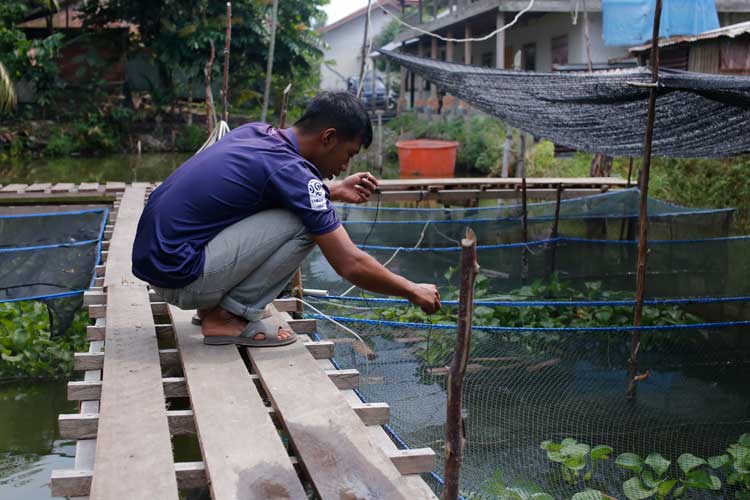Manila, Philippines – The worsening impact of climate change is driving the Philippines to prioritize peatland conservation. In May 2023, House Bill 8204 was approved to help improve the sustainable management of peatlands, recognizing their significance as natural climate change solutions. Peatland ecosystems, characterized by the accumulation of decomposed plant materials, permanent waterlogging, and various vegetation, offer nature-based climate mitigation by acting as carbon sinks, absorbing and storing more carbon than they release.
In the Philippines, there are two major peatlands: Agusan Marsh in Agusan Del Sur and Leyte Sab-a Basin in the island of Leyte.
However, peatland fires have frequently occurred in recent years, primarily because of drought and deliberate drainage for agricultural purposes such as palm oil, rice, and corn cultivation. Alam Siak Lestari (ASL), a community-owned enterprise in Indonesia dedicated to peatland protection, shared its best practices on how the Philippines can conserve and boost its wetland conservation by swamp fish cultivation.
Peat Swamp Fish: Guardians of Peatlands
In the Siak regency in Indonesia, 57.44% of the land consists of peatlands. ASL is taking a unique approach to keep the peatlands wet and prevent forest and peatland fires by cultivating snakehead murrel fish (Channa striata), a native peatland species which is locally called as Ikan Gabus in Indonesia or dalag in Filipino. The fish is chosen after the ASL team immersed themselves in the Malay culture and learned its use as a supplement in postpartum recovery due to its exceptionally high albumin levels.
Gun CEO and founder of Alam Siak Lestari, stated that “The peatland fires in Siak were a significant contributor to the hazardous haze in 2015. To address this issue, the government has implemented stricter policies for peatland protection. On the other hand, local communities have been seeking alternative, peat-friendly sources of income. It’s from this quest that a business model has emerged, one that not only benefits the community but also preserves the environment.”
The program, aptly named “The Healthy Ecosystem Alternative Livelihood (HEAL) Fisheries” led by ASL, supports the development and marketing of local snakehead fish and other native species, generating value-added products such as Albumin, which boosts community incomes. Through Village-Owned Enterprises (BUMDES), community members hold shares, providing them with dividends from annual company profits, fostering economic well-being and long-term sustainability.Sukardi, a veteran snakehead fish farmer in Siak, said, “Initially we were unfamiliar with this type of farming, we found it challenging to start, and unaware of the fish’s potential. However, with ASL’s consistent support and guidance, we now see sustainable and tangible results,both economically and in terms of health and environmental impact.”
ASL’s climate mitigation efforts have safeguarded 76,744 hectares of peatland, with plans to involve 10 fire-prone villages in ecosystem initiatives by 2027, introduce 20 peat-friendly products to the Asian market in five years, and engage 500 local youths in climate change mitigation.
The effectiveness of the initiative has brought in support from the local government unit which has led to the creation of Transfer Anggaran Kabupaten Berbasis Ekologi (TAKE) or Ecological Fiscal Transfer program. This program is designed to provide fiscal incentives to village governments in Siak Regency that excel in addressing regional environmental issues. The goal is to accelerate the implementation of the Siak Hijau policy by fostering collaboration between villages and rewarding both government and community achievements. This initiative aligns closely with environmental economic regulations and the Siak Green Regency’s roadmap action plan.
Alam Siak Lestari and Siak Regency show how public awareness, local wisdom, policy enforcement, and community empowerment drive progress and address regional and global issues. The Philippines can also explore adopting similar sustainable practices to conserve peatlands, bolstering both local economies and environmental resilience.
Liked this post? Follow SwirlingOverCoffee on Facebook, YouTube, and Instagram.


